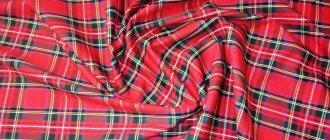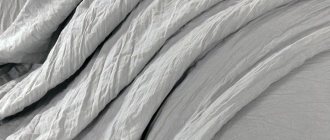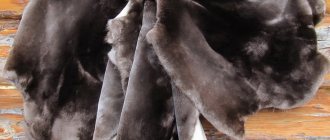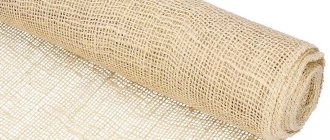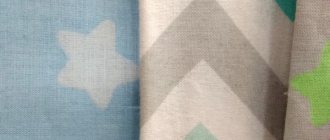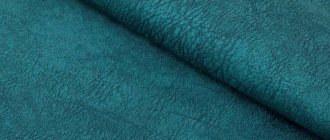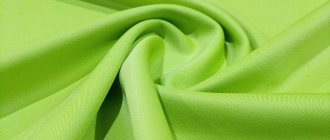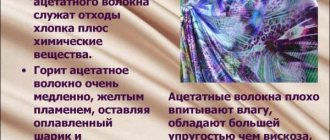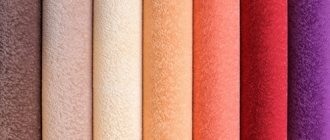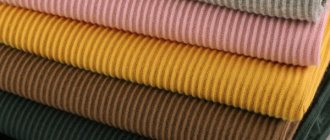Home / Natural fabrics
Back
Published: November 27, 2020
Reading time: 4 min
0
339
Bengalin fabric is a material with a stretch effect, flowing, with a slight shine, reminiscent of silk. It has low thermal conductivity and holds its shape. Ideal for sewing things that will fit your figure or have a complex texture. Used for sewing products with complex cuts.
- 1 Description
- 2 History
- 3 Composition and characteristics
- 4 Strengths and weaknesses
- 5 What is sewn from bengalin
- 6 Care 6.1 Washing
- 6.2 Drying
- 6.3 Ironing
Description
The manufacturing technology of the material involves perpendicular weaving of threads with single twist. As a result, a ribbed pattern characteristic of bengalina is obtained. This weave is called twill. The second most common type of fiber weave in textile production. Before weaving, the fibers, regardless of origin, are carefully polished.
It is characterized by resistance to tearing, due to the fact that the load is immediately applied to 2 threads. The fabric has an increased number of interlacing dots, which makes the fabric so durable.
The width of the relief depends on the thickness of the base thread. The thicker the bengalin, the more pronounced the scar. The technology makes it possible to obtain very dense material, or light, thin, almost airy. But, the main thing is that regardless of the density, the result is a very strong canvas.
The fabric is elastic. This is achieved by adding elastin from 2% to 5%.
The bengalin color can be any, the canvas can be easily dyed, and the item retains its original color for a long time.
Production Features
The fabric is woven from single twisted threads, woven perpendicular to each other during the production process. As a result, a fabric structure is formed with a characteristic, barely noticeable pattern, which in the textile industry is called a “ribbon.” The dimensions of the picture may vary. These parameters depend on the length and thickness of the weft and warp threads. This weaving method guarantees a strong, dense, durable fabric.
Then the material is painted. It can be plain, painted with drawings and prints. Fabrics made from natural fibers are particularly easy to dye and more resistant to fading. Synthetic analogs may fade during the first wash.
Mixing fibers with different properties in the composition of the fabric ensures that the resulting fabrics have different densities. Summer, casual and demi-season clothes are sewn from lightweight ones. From thicker ones - warm outerwear.
History of origin
Bengalin material began to be produced in India, in an area called Bengal, hence the name of the fabric. In those distant times, it was made from silk threads. An interesting fact is that the name “Bengal” tiger also comes from the name of this historical area, where they are considered sacred animals. And sparklers were also first used in India, in this region.
The fabric came to Europe only in the 19th century. The French brought it and it became very popular, looking no worse than natural and expensive silk. In those days, every noble lady had bengalin outfits.
Later, the production of fabric was made cheaper by ceasing to use silk, replacing it with cotton. Nowadays, not only cotton is used to produce bengalin, but also synthetic materials and wool.
Types of fabric
A lot of them:
- Euro Bengal is characterized as the most first-class. Produced in Europe. It is made from natural fibers, but sometimes synthetics may be added.
- Turkish bengalin is considered as classic and as close as possible to traditional fabric.
- A product with the prefix “cotton” is the most practical material. Made from cotton plus some elastane.
- Imitation of denim material.
There are many types of bengalina. But each of them should have a little elastane, a ribbed pattern and a soft and dense texture.
Composition and characteristics
There are 4 types of fabric depending on the composition:
- natural, that is, the base fibers are of animal or plant origin, and the elastic threads are no more than 2%, this can be wool, cotton, silk;
- artificial, with base threads of artificial origin - viscose, nylon, others;
- mixed, several types of fibers are used for production;
- synthetic, made from polyester, nylon
The most popular bengalin consists of 98% cotton and 2% elastin.
If you look at the photo of bengalin, it immediately becomes clear that there are a lot of varieties and it is used for sewing different products.
The most common types:
Author:
Zakharova Nina Afanasyevna
I hope you like my article! If you find any shortcomings, just write to me about it! I am always ready for a conversation and will answer any questions you have, ask them!
